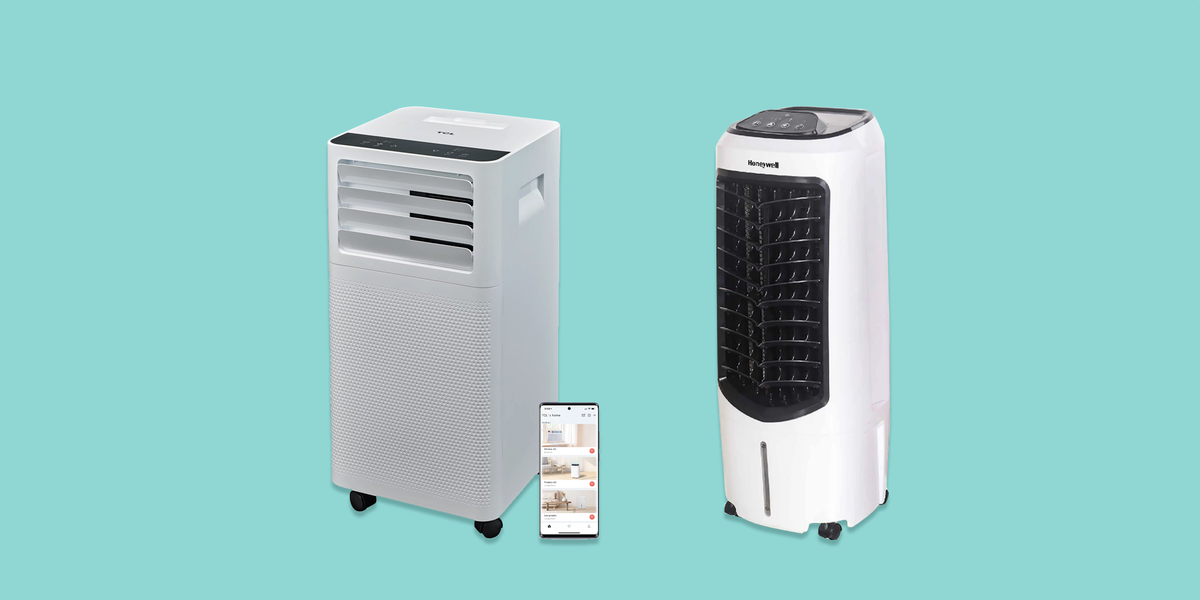8 Best Portable Air Conditioners in 2024, According to Testing - Good Housekeeping

Portable ACs work by drawing in air, cooling it with the use of evaporative coils and exhausting the leftover heat through a tube that is typically vented through a window. There are two types of portable ACs that use this basic engineering: single-hose and dual-hose. The best choice for you will come down to a few factors. Here's what to know about each:
✔️ Single-hose portable AC: This is the most common type of portable air conditioner and also the least expensive. So if you're on a tight budget, it's your best bet. It features one exhaust hose which vents heat from the unit to the outside. Air to be cooled is pulled directly from the room.
This leads to the main drawback of single-hose ACs: They create negative pressure in the room, meaning hot air from outside or other unconditioned parts of the house will be drawn into the room through any openings, like cracks around windows and doors. This makes it harder for the AC to maintain consistent temperatures and the units also have to work harder, making them less energy efficient. For this reason, our experts say single-hose ACs are generally best for smaller spaces (200 square feet or less) where the heat and humidity doesn't get too extreme.
✔️ Dual-hose portable AC : As the name suggests, these units feature two hoses that usually connect to the same window — one to take air in and one to exhaust it. Using outside air to cool the system instead of air from the room eliminates the negative pressure issue.
That's why our experts say to go for a dual-hose unit if you need to cool a larger space that can get quite hot and humid. It will be more effective at keeping the room cool and it will use less energy in the process, since the motor won't have to work as hard. The downside is you'll have to spend considerably more for a dual-hose portable AC, as much as $300 more based on current prices.
What about evaporative coolers (EC)? We include these devices in this report because A) they are portable and B) they are designed to cool a space. But that's where the similarity between evaporative coolers and portable ACs ends.
ECs do not have exhaust or intake hoses. Instead, they use the process of evaporative cooling to cool a space. The only moving part is the internal fan that moves air across a water reservoir and cooling pads. As this happens, the water slowly evaporates, creating cooler air which is then expelled back into the room.
ECs produce more of a cool breeze than a blast of cold air; they're ideal in dry climates where humidity levels are low and the air is hot.
ECs use much less energy than any other AC type, as they do not have internal parts that do the cooling. Since they don't need to be exhausted, you can use ECs in any space, or even outside.
Comments
Post a Comment